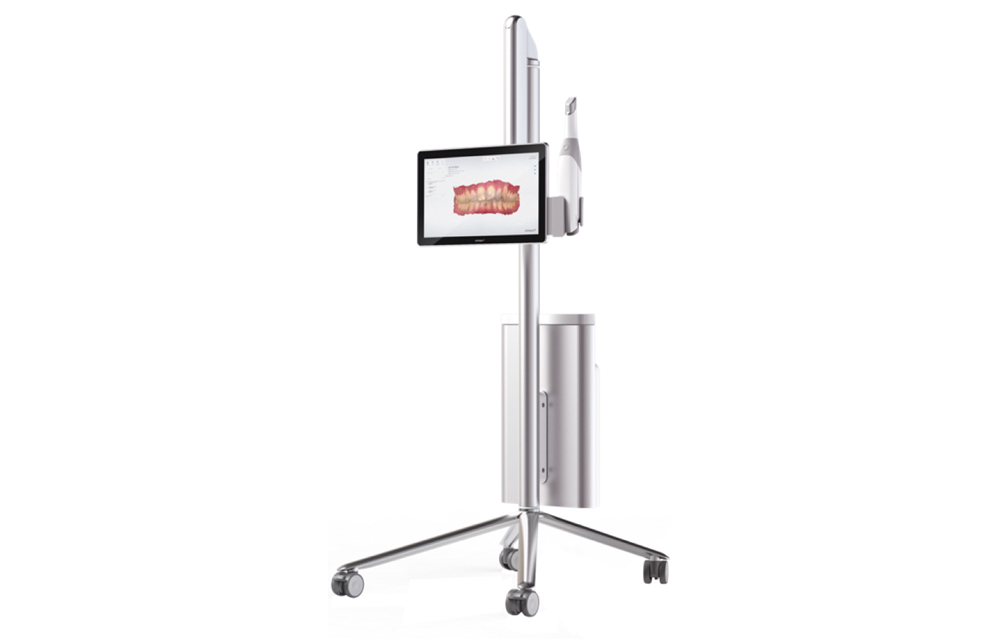One of the biggest challenges dentists face when using digital scanners is the difficulty of detecting deep margin lines of prepared teeth. This is one of the most frequent problems with IOS and with optical impressions and it includes not only deep margins but is also a big issue in cases of bleeding. Where it is necessary for the clinician to place the prosthetic margin sub gingivally, it becomes more difficult for the light to correctly detect the entire finish line. Since light cannot register areas that are not visible, this is why it becomes a challenge in the event of bleeding, since blood may block out the margin view.
A good impression, be it optical or conventional, is a result of many factors, including the quality of the prep, patient compliance, depth of decay, aesthetic zone, patient expectations, and health of soft tissue. Whether is scanning or taking a PVS (or other) type of impression, these factors are always present and can result in less than ideal outcomes. But there is one significant difference in these types of cases when it comes to scanning vs conventional impressions.
I asked a number of lab technicians about these types of challenging cases, and what they do when they get a conventional impression from one of their doctors and it’s clear that there is a problem outlining the margins. Whether it’s a tear, a bubble, poor prep, lack of retraction, or any other factor, what I wanted to know is how the lab techs handle this type of issue. Do they call the doctor to get another impression? Do they approximate the margins to the best of their ability and finish the restoration? Do they send a die and ask the doctor to outline the margins? More often than not, most people I spoke to said they did not feel comfortable calling the doctor. Now that may not be the case for the reader of this article, but that is a common answer I heard when speaking casually to a number of people. The biggest hurdle, I was told, was that they didn’t want to upset the doctor or lose their business. So they did the best they could at approximating the margins. Whether or not you agree with this, what this tells me is that conventional impressions held a certain percentage of error, outside of shrinkage and other known factors, that nobody wanted to talk about it.
Then comes the digital scanner. There are many differences between the numerous scanners available and this article is not about comparing and contrasting them. Depending on how a clinician wants to use a digital scanner and what types of restorations are most common in each practice, there may be a better choice depending on these factors. I am partial to my digital scanner for a number of reasons, but mostly because of its accuracy in capturing soft tissue, which is critical especially in the aesthetic zone (for me anyway). But no matter which scanner you use, there is one thing that’s important to note here and that is its ability to point out missing pieces of the impression at the time of scanning. When you, as the clinician, can see immediately that there is something missing in a critical area like the margin of your prep, it is easy to go back, capture that area with more images, and process the scan to send a complete impression. This is one massive advantage of digital scanning that most people don’t talk about, and that is the ability to self-correct without the lab technician calling you, estimating the margin, or sending you dies to assess. All you get is a precisely fitting, well-made restoration, with no question about its integrity. And that is an even greater advantage over ease of use, speed, patient comfort, efficiency, and accuracy, and is good for the environment.
About Dr. Agatha Bis
Oakville Dentist, Dr. Agatha Bis, DDS received her Doctor of Dental Surgery degree from the University of Western Ontario in 1996. With over 25 years of clinical experience creating beautiful and healthy smiles, Dr. Bis offers a unique approach to dentistry, blending modern dental practices with the use of digital technology to optimize health outcomes. With thousands of hours in post-graduate training, her unique focus and expertise in treating TMD and providing options in restorative dentistry, along with digital technology have led to helping numerous patients resolve chronic and debilitating dental challenges.

